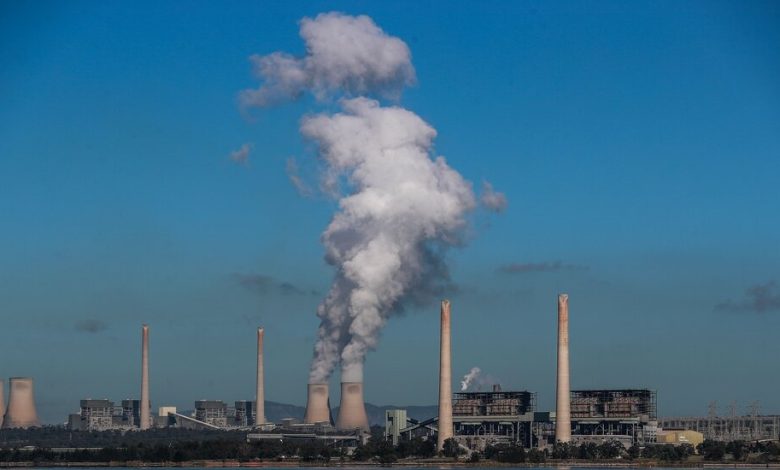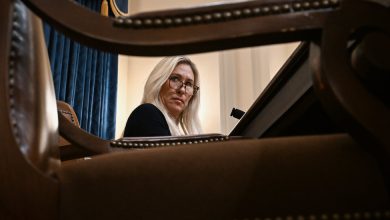Australia Eyes a Fraught Pivot from Coal Power to Renewables

The Australia Letter is a weekly newsletter from our Australia bureau. Sign up to get it by email.
When it was first announced in 2017 that Australia’s oldest power station, Liddell, would close, the news set off a political firestorm.
On the heels of the abrupt closure of another coal plant which caused energy prices to spike, the announcement sparked fears that shuttering Liddell, which opened in 1971 and accounted for 10 percent of New South Wales’ energy, would have a similar effect.
Politicians accused its owner, AGL Energy, of trying to “short the market,” while locals in the Hunter Valley expressed concerns about job losses. The Coalition government went as far as to attempt to broker a deal for the power plant to be sold to a competitor willing to extend its operating life, and the news became a flashpoint for a debate about the future of Australia’s electricity system and renewable energy.
But today, when the final unit of the power station was switched off, it was in a very different environment.
Workers have either been transitioned to another power station across the road or retired. The fears about the impact of the energy grid are muted — although some concerns remain that the closure will lead to higher electricity prices at peak times. AGL’s plans to transform Liddell into an “industrial energy hub” include building a battery on the site and looking into solar, wind and hydrogen power.
And it comes as Australia is making a seismic shift toward renewable energy and shakes off decades of reliance on coal-fired power. Since 2017, renewable energy doubled from 16.9 percent of Australia’s total energy generation to 35.9 percent in 2022, according to the Clean Energy Council. The governing Labor Party has committed that by 2030, 82 percent of the energy Australia generates will be from renewables.
“Australia has had and still does have one of the dirtiest power systems, but it’s moving quite rapidly,” said Chris Briggs, the director of the Institute for Sustainable Futures at the University of Technology Sydney.
But as that transition accelerates, experts warn that Australia needs a clearer national plan to manage its exit from coal power.
“The approach of governments has been that they will try to accelerate or facilitate the buildout of renewables storage and transmission — the sort of good news side of the story — but no one really wants to put their hand up and be responsible for job closures — that’s politically contentious,” Dr. Briggs said. “And so we’re missing the other side, which is the plan to acknowledge and put a timetable against the closures, and manage them in a more organized fashion.”
It might be tempting to look at Liddell’s orderly closure and assume that the system is working, he said, “but the risk is, as you get later in this decade, if the government’s plan to get to 82 percent really does come to fruition and we’re on track for that, then you could end up having a rush, a cluster of coal plants closing at similar times at a relatively short notice.”
There’s also the possibility that the owners of these plants will decide to delay closures to take advantage of energy price spikes that may occur when other power stations close, he added: “So the other owners sit back, hoping that someone else will close first and they might get a little bit more revenue out of the plant. But, of course, that militates against getting the notice of the timing that we want to get to be able to manage this transition.”
Similarly, the Australian Council of Trade Unions has called for a national authority to be established to manage the transition to renewable energy, which would coordinate with government bodies to ensure that affected workers have education, employment and redundancy options.
“We cannot leave this to the market,” the union said in a statement. “A just transition plan is crucial for workers and their communities, such as those around the Liddell Power Station, who are living through the impact of change.”
Now for this week’s stories:
Australia and New Zealand
-
‘Best Friends’ Australia and New Zealand Patch Up a Major Difference. A reversal in Australian immigration policy toward New Zealand is part of a reset in relations, but some tensions remain.
-
Bruce Haigh, Diplomat Who Helped Battle Apartheid, Dies at 77. An Australian, he assisted South African dissidents like the journalist Donald Woods, whose story was told in the movie “Cry Freedom.”
-
Barry Humphries (Dame Edna to You, Possums) Is Dead at 89. Bewigged, bejeweled and bejowled, Mr. Humphries’s creation was one of the longest-lived characters ever channeled by a single performer.
-
Japanese Ship, Torpedoed in 1942 With P.O.W.s Aboard, Is Found. When the Montevideo Maru sank in the South China Sea during World War II, it was carrying hundreds of prisoners, most of them Australian.
Around The Times
-
Trump’s Lawyer Spars With E. Jean Carroll Over Rape Accusation. Joseph Tacopina asked Ms. Carroll to retell her story in minute detail, probing for inconsistencies. His aggressive questioning irritated the judge.
-
She Redefined Trauma. Then Trauma Redefined Her. Dr. Judith Herman, who helped launch the field of trauma studies, has returned to publishing after a long, mysterious ordeal.
-
Why ‘Are You There, God? It’s Me, Margaret’ Still Matters. Judy Blume’s coming-of-age story finally hits the big screen this month. The book will always have a spotlight of its own.
-
Ukraine War ‘Turned Everything Upside Down’ in This Polish Town. A Polish town that was once occupied by the Soviets used to embrace its history with military re-enactments and Lenin banners. But “nobody wants to be reminded of Russia these days.”
Enjoying the Australia Letter? Sign up here or forward to a friend.
For more Australia coverage and discussion, start your day with your local Morning Briefing and join us in our Facebook group.




